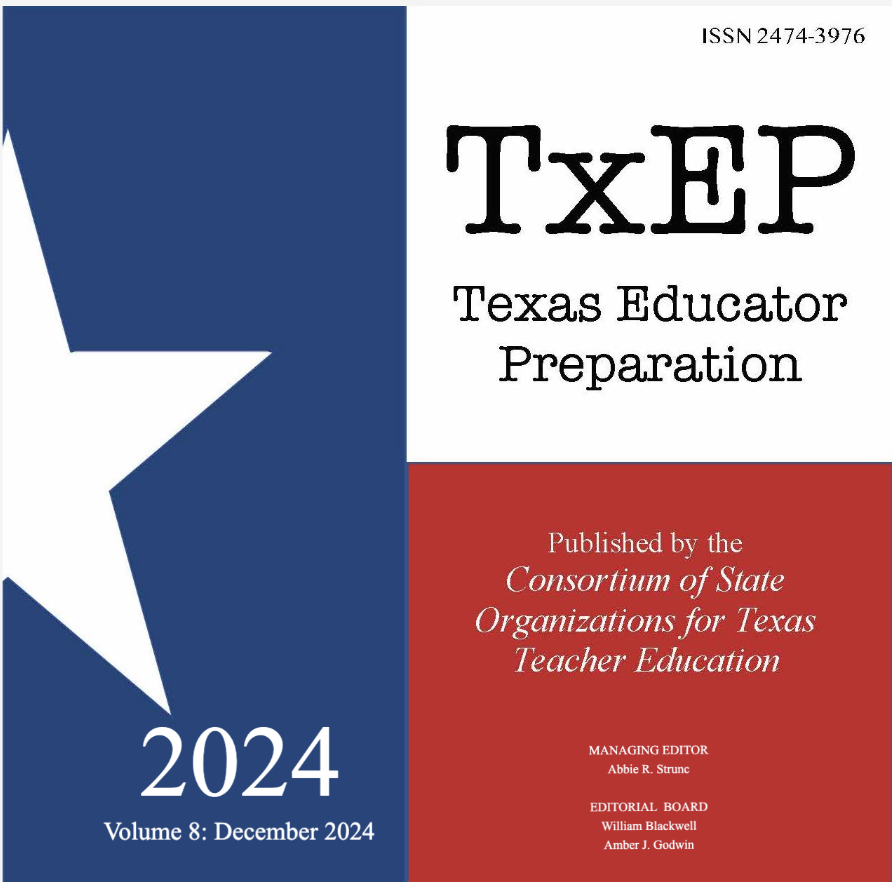Educator Preparation Programs Acknowledge Key Transformations Leading to Recognition in ELAR First-Time Pass Rates
Keywords:
teacher certification, English Language Arts and Reading, Educator Preparation ProgramsAbstract
In spring 2023, the Texas Education Agency (TEA) commended eight Educator Preparation Programs (EPPs) for their exceptional performance, notably achieving high first-time pass rates in English Language Arts and Reading (ELAR). Six of these programs have collaborated to share insights on program adjustments, coursework revisions, and additional resources that contributed to their success. This article examines transformative changes within these six programs and discusses common trends among the featured programs. By identifying and leveraging these patterns, other EPPs can enhance collaboration, inform strategic decisions, and maximize effectiveness, ultimately improving educational outcomes.
Keywords: teacher certification, English Language Arts and Reading licensure exam, Educator Preparation Programs
Downloads
References
Brown, B., Horn, R.S., & King, G.V. (2018). The effective implementation of professional learning communities. American Journal of Education and Learning, 124(4), 53-59.
Gough, P. B., & Tunmer, W. E. (1986). Decoding, reading, and reading disability. Remedial and Special Education, 7(1), 6-10. https://doi.org/10.1177/074193258600700104
Layne, S. (2015). In defense of the read-aloud: Sustaining best practice. Stenhouse Publishers.
National Reading Panel (U.S.) & National Institute of Child Health and Human Development (U.S.). (2000). Report of the National Reading Panel: Teaching children to read: An evidence based assessment of the scientific research literature on reading and its implications for reading instruction. U.S. Department of Health and Human Services, Public Health Services, National Institutes of Health, National Institute of Child Health And Human Development.
Pearson, P.D. & Gallagher, M.C. (1983). The instruction of reading comprehension. Educational Psychology, 8(3), 317-344.
SBEC. (2022). 2021-2022 required test chart for Texas certification. https://tea.texas.gov/sites/default/files/required-and-replacement-test-chart.pdf
Scarborough, H. S. (2001). Connecting early language and literacy to later reading (dis) abilities: Evidence, theory, and practice. In S. B. Neuman & D. K. Dickinson (Eds.), Handbook of early literacy research (pp. 97-110). The Guilford Press.
TEA. (2022a). 2021-2022 educator preparation program (EPP) commendations. https://tea.texas.gov/texas-educators/preparation-and-continuing-education/program-provider-resources/2021-22-educator-preparation-program-epp-commendations
Texas Education Agency. (2022b). House bill 3. https://tea.texas.gov/about-tea/government-relations-and-legal/government-relations/house-bill-3
Texas Education Agency. (2022c). The science of teaching Reading exam. https://tea.texas.gov/texas-educators/certification/educator-testing/the-science-of-teaching-reading-str-exam





